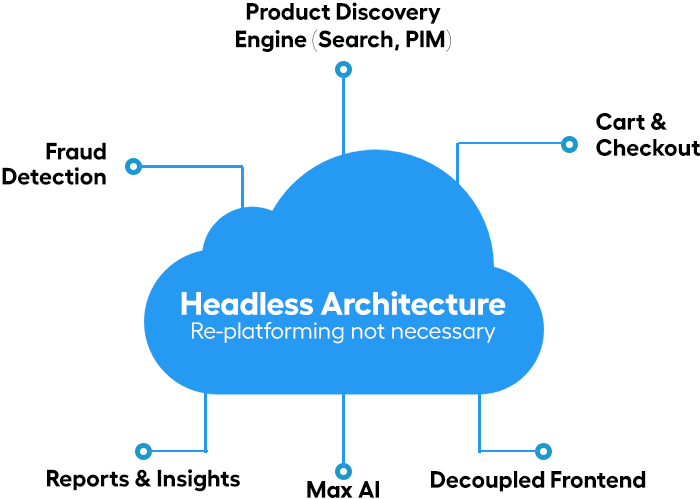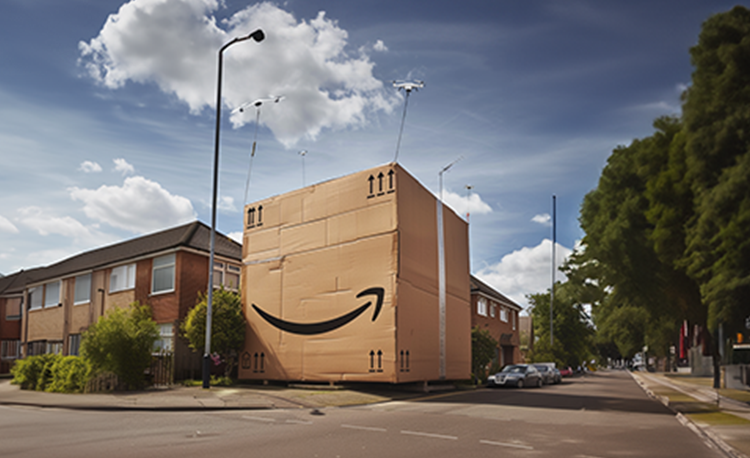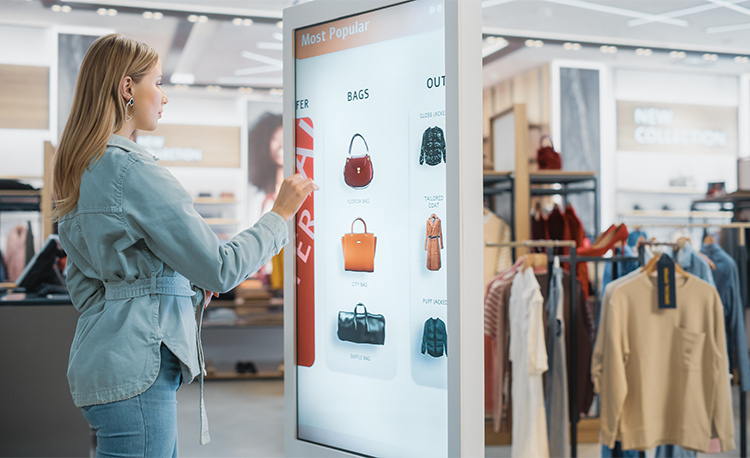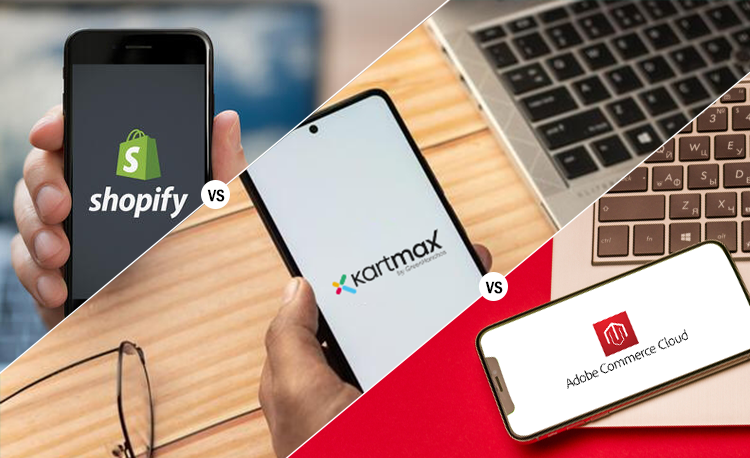Top 5 Warehouse Management Mistakes Brands Make When Scaling eCommerce Operations
As Henry Ford wisely said, “The only real mistake is the one from which we…

The Indian eCommerce industry is transforming at a faster pace than ever before with Indian consumers boldly embracing online channels for all their shopping needs. Analysing the trends in the omnichannel split of the retail market, the share of the eCommerce contribution in the market pie has been on a steady rise from 3% in 2017 to 7% in 2021 and is further projected to go up to 11.4% revenue share by 2026.
As consumers continue investing substantial time and money in online shopping, retail brands are embracing the demand of modern shoppers to augment the offline shopping experience in the digital realm. This is leading to the brands channelling significant capital into redefining Customer Experience (CX), encompassing rich and immersive product detail pages, personalized notifications, and impulse-driving limited-time offers. The writing on the wall is clear: CX is set to revolutionize the D2C landscape.
In the enduring marketplace vs. D2C debate, Customer Experience reigns supreme. But what makes marketplaces continually outshine D2C in terms of CX, even when D2C holds inherent advantages? The answer often lies in technology.
Many D2C enterprises have a lengthy history of investments in their current eCommerce platforms. These platforms, often rigid and monolithic, fail to cater adequately to the unique needs of the Indian consumer, leading to a CX deficit. Tied down by these existing investments, brands find it challenging to transition to new platforms and end up grappling with their limitations.
Now, this leads to an interesting question:
How can brands retain their current eCommerce tech platform and yet experience the thrilling new features of new technology at the same time? The tech world has finally come up with an answer to this problem…
Enter Headless Commerce, a cutting-edge tech solution driven by innovations like JAMstack. This revolutionary architecture decouples the backend and business logic from the front end, seamlessly linked through APIs. It introduces the concept of “composable commerce,” enabling businesses to cherry-pick features from various ecosystems, thus eliminating the need for cumbersome platform transitions.
Conventional eCommerce platforms often suffer from sluggish and inadequate product search functionality, leading to user frustration. Headless Commerce revolutionises this with lightning-fast searches, typo tolerance, intelligent keyword mapping, and seamless user interfaces.
Thus, solutions in the market:
As Indians are often not handy with emails, they tend to have multiple email addresses. They don’t check their emails frequently and lose their passwords. These issues make it difficult to get them to sign up during checkout leading to a higher bounce rate at the sign-up/login step.
GreenHonchos Commerce Cloud (GHCC) deployed a mobile-first headless checkout process years ago to combat the same. Most mainstream eCommerce platforms do not support OTP-based checkouts. This is where a headless checkout can come in and replace the existing first-party checkout mechanism of your eCommerce platform to enable an OTP-based checkout.
Headless checkout solutions in the market:
RTO & COD go hand-in-hand but none of the mainstream eCommerce platforms provides any mechanism to help prevent them. This is mostly because CoD does not occupy big enough space in the western markets but in India, it is the default consumer choice.
A fraud detection system can be of use here where such a system would identify & mark such risky orders ahead of fulfilment. In a headless form, such a system could also help prevent these risky orders in the first place.
Some fraud detection tools available in the headless form:
Given the fragmented tech eCommerce ecosystem in India, Headless Commerce has found wide acceptability by India’s leading retail brands. It enables the use of the best of the modern tenants of technology without disrupting the current eCommerce operations and provides a unified seamless experience to digital shoppers.
GHCC and Fabric are examples of Headless Commerce applications. All logically separate eCommerce features are built as independent applications leading to better performance.
From a product development perspective, headless software design and headless commerce have been one of GHCC’s main focus areas. This technology was developed as a response to all the brand challenges and problem statements that we have been observing over the past decade in the Indian eCommerce context which are unique in comparison to the Western markets.
Businesses can take specific modules of GHCC, for example, its Checkout or its PIM, and combine it with their current platform instead of doing a complete re-platforming. Its APIs make it easy to integrate with any piece of software irrespective of their underlying technologies.

Many eCommerce companies have historically controlled the frontend user experience and the backend systems on the same platform. It was hard to update the front end without simultaneously updating the back end because of these monolithic systems. They limit creative freedom, which in turn affects consumer experiences while allocating time-consuming projects to teams that might only require a small adjustment. Organisational agility and competitiveness are negatively impacted by the difficulty of using new technology to enhance consumer touchpoints.
Unlike conventional software, headless eCommerce platforms make use of APIs’ strength and flexibility, enabling you to create a tech stack customised for your unique requirements. This is possible since APIs may effectively connect numerous apps throughout an organisation. Integration becomes far more effective as a result. In contrast to monolithic platforms, which may exhibit restricted functionality when scaling with your organisation, headless platforms often have components that are built to scale separately, making scaling with them seamless.
As headless platforms come with built-in frontends, which shorten time-to-market during the launch phase, they can be a viable choice for new enterprises seeking rapid wins in the early stages. The traditional technique will work if your business does not require you to be present across multiple channels; it all depends on what you’re searching for.
However, scalable platform architecture is necessary to consistently exceed consumer expectations and outperform market demands, which is where headless commerce comes into play. For experience-focused firms like lifestyle items and direct-to-consumer (DTC) brands, a content-led approach like headless commerce makes perfect sense.
Creative teams may optimise the user experience and increase customer engagement and conversions with a decoupled architecture by using headless CMS (content management systems) or digital experience platforms (DXPs) as front-end presentation layers. At the same time, the back end will have features like a platform for invoicing and subscription administration, inventory management, and account management.
Making the switch to headless commerce can be a viable move while choosing a platform that can support your brand’s needs as well as its expansion.

But how exactly does Headless Commerce impact your profits?
Uniform Customer Experience. Higher Uptime. Predictability. Easy Maintenance.
All these lead to a positive impact on your bottom line – the profits. On top of it, it gives you the flexibility to leverage advancements in different Technologies in different parts of your eCommerce. For example, use R or Python for Reports, use Nuxt.js for the front end, and use PHP for websites.
For businesses who are just starting with eCommerce, readily available SaaS platforms work just fine. However, if your business has an ambitious sales target, you should start right away and reap the benefits of Headless Commerce. You can’t go wrong with it.
GHCC has been working towards headless eCommerce for more than 3 years now. The development journey started as a direct solution to the problems faced by one of our clients on a mainstream platform, leading to the birth of GHCC headless checkout complete with a separate customer & order database with its independent logic. This allowed OTP-based login with a fast & modern front-end built on top of Vue.JS working entirely with the help of REST APIs. When a consumer uses the headless checkout to make a purchase, GHCC will raise the same order and customer profile on the platform separately, maintaining the already established fulfilment process after the conversion.
Brands saw an immense business impact with the help of this headless checkout module alone. The checkout speed was improved drastically since it no longer had to wait for platform-specific logic & APIs to run in the background and the entire process was distributed onto separate entities (Platform’s server & GHCC checkout serverless function). The conversions were up by a staggering 42%.
Since then we have developed a full suite of GHCC services & an entire headless eCommerce platform with services like checkout, search, fraud analysis for RTO prevention, product information management system, and much more, ensuring a greater customer experience and a seamless journey from listing page to checkout. In the coming years, the name of the game is Customer Experience, and here is the key to mastering it for your brand.
Headless Commerce is reshaping India’s eCommerce landscape, offering a solution to the CX challenge and bridging the gap between D2C and marketplace experiences. With compelling statistics backing its efficacy, it’s clear that the time to embrace this technology is now. As businesses race to outperform market demands, Headless Commerce stands as the key to unlocking new levels of Customer Experience and profitability.
Are you looking for an eCommerce technology partner that understands the needs of your D2C eCommerce? Check out GreenHonchos – a Full-Stack D2C enabler offering services like D2C technology, growth marketing, eCommerce digital marketing, marketplace management, social media marketing and much more! For more valuable insights on eCommerce marketing and D2C growth strategies, follow us on LinkedIn, Facebook, Instagram and Twitter or visit our websiteto know more about our services.


In the evolving world of modern retail, success isn’t just...


In today’s global eCommerce ecosystem, marketplaces have b...


In the fast-paced digital world, time is everything, especia...


As Henry Ford wisely said, “The only real mistake is the ...


For many years, July was often considered a slow month for r...


With the overall increase in global retail sales figures, th...


In the...


In the...


The Indian eCommerce industry is transforming at a faster pa...


It’s been a while since Meta introduced its contender to T...


Marketing your brand at Amazon can exponentially boost your ...


The pandemic has brought about a lot of changes and ada...


There is no denying the fact that marketplaces have bee...


The post-pandemic world has made brands realise the importan...


We are living in a digital age where every brand is coming a...


Digital media accounted for 64.4% of global ad sp...


Marketers since generations have banked heavily on the ...


Social Media has grown rapidly in the past couple of years. ...


The first step towards building a successful business i...

Want to take your eCommerce business to the next level? We help businesses make the most at every stage - from product conceptualization to achieving the maximum optimization & ROI on business operations.
B-24, Sector 3, Noida, GB Nagar,
Uttar Pradesh 201301, India
Mazaya Business Avenue, Tower AA1,
FZCO, Office #18, 36th floor, JLT, Dubai, UAE
1st Floor, Plot-183, Indiranagar Stage 2,
Bengaluru, Karnataka,
560038, India